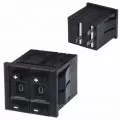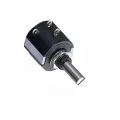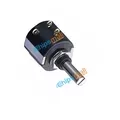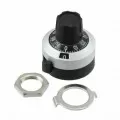OUTLINE:
A Comprehensive Guide of Ceramic Potentiometer
 131
131In the electronic field, ceramic potentiometer is an indispensable helper, which has become a key component in many electronic devices with its unique characteristics and high performance. With the help of this comprehensive guide of ceramic potentiometer, let’s explore the mystery of this powerful component and apply it wisely.
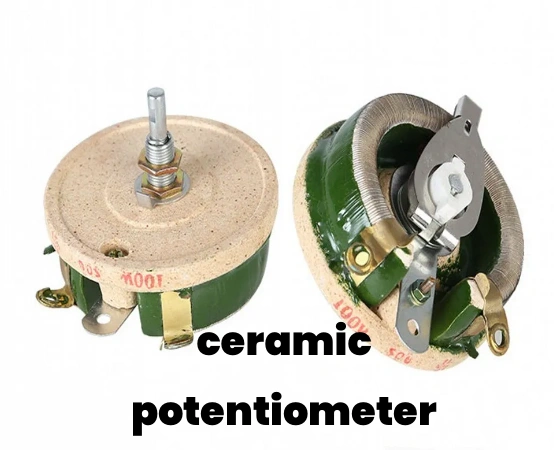
Basic structure of ceramic potentiometer
Ceramic potentiometer, as a kind of variable resistor, its core structure is based on a matrix made of ceramic material. This substrate is covered with a film of conductive material, and by rotating the knob of the potentiometer, the contact area on the film can be changed, thus changing the resistance value. This unique design makes the ceramic potentiometer have the advantages of small volume, high reliability and long life, so it has been widely used in various electronic equipment.
To be more detailed, firstly, ceramic potentiometer is mainly composed of ceramic matrix which has been discussed previously, resistance body, sliding contact, central contact ring, etc. The matrix is the support structure of the potentiometer and is made of a ceramic material with high thermal conductivity and high mechanical strength, which not only has good insulation properties, but also maintains stable electrical properties in high temperature and humid environments.
Secondly, the resistance body is the key element in the ceramic potentiometer, which determines the main electrical characteristics of the potentiometer. The resistance body is usually formed by depositing one or more layers of resistance material on a ceramic substrate. And these resistance materials need to have good resistance stability, small temperature coefficient and low static noise to ensure the reliability of the potentiometer.
Thirdly, the sliding contact and center contact ring are used to adjust the resistance value. The sliding contact slides on the resistance body and changes the resistance value by changing the contact area with the resistance body, so as to achieve accurate control of the current or voltage in the circuit. The center contact ring is used to connect the external circuit to ensure that the potentiometer can be stably plugged into the circuit.
Working principle of ceramic potentiometer
The working principle of ceramic potentiometer is based on the change of resistance value. When the knob is rotated, the conductive material forms a resistance with the connected lead, and the voltage drop is generated when the current passes through the resistance, which realizes the regulation function of the potentiometer. Ceramic potentiometers are usually divided into two types: rotating potentiometers and sliding potentiometers, in which the rotating potentiometer realizes the adjustment of the resistance value by rotating the knob, and the sliding potentiometer changes the resistance value by sliding the contact.
When the sliding contact slides on the resistor, it changes the contact area with the resistor, thus changing the total resistance value in the circuit. This change can be reflected as a change in the current or voltage in the circuit, so as to achieve accurate adjustment of the circuit parameters.
The sliding contacts of ceramic potentiometers are usually made of precious metal materials, such as gold or platinum, to ensure good electrical conductivity and wear resistance. At the same time, the surface of the resistance body is usually specially treated to improve its hardness and wear resistance, thereby extending the service life of the potentiometer.
Different types and features of ceramic potentiometer
As a crucial part of electronic components, ceramic potentiometers can be divided into many types according to their structure, function and application, accordingly owning different characteristics.
1. Classification based on mode of regulation
|
Classification based on mode of regulation |
|
|
Adjustable ceramic potentiometer |
With adjustable resistance value, the user can change the resistance value by rotating or sliding the contact, |
|
Achieve accurate control of the current or voltage in the circuit. |
|
|
Stationary ceramic potentiometer |
The resistance value has been determined during the manufacturing process and cannot be changed by the user. |
|
Small volume, lightweight and good stability. |
|
2. Classification based on structure
|
Classification based on structure |
|
|
Horizontal ceramic potentiometer |
Compact structure, small space, easy to install and wire on the circuit board, suitable for occasions with high space requirements. |
|
Vertical ceramic potentiometer |
The structure is relatively simple, easy to manufacture and debug, with high mechanical strength and stability, suitable for high mechanical strength and stability requirements |
|
Chip type ceramic potentiometer |
Small size, light weight, easy to automate production and installation with high accuracy and stability, suitable for applications requiring high accuracy and stability. |
3. Classification based on resistor material
|
Classification based on resistor material |
|
|
Ceramic film potentiometer |
The resistance body is made of ceramic film material, which has high resistance stability and accuracy. |
|
Glass glaze potentiometer |
The resistance body is made of glass glaze material, with high heat resistance and moisture resistance, capable of satisfying the need to work in a high temperature or humid environment. |
4. Classification based on contact type
|
Classification based on contact type |
|
|
Single-turn potentiometer |
The maximum or minimum resistance value can be reached by rotating the contact on the resistance body only once, suitable for occasions where the adjustment range is not required. |
|
Multi-turn potentiometer |
The contact needs to be rotated multiple turns on the resistance body to reach the maximum or minimum resistance value, suitable for large adjustment range requirements of the occasion. |
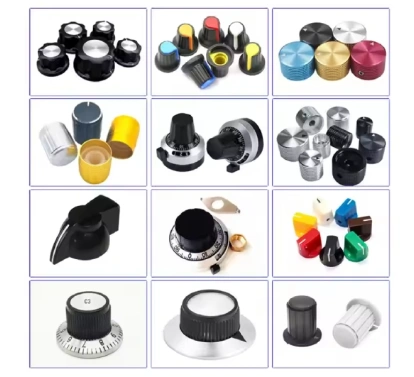
Application and advantages of ceramic potentiometer
After understanding different types of ceramic potentiometer and their corresponding features, let us have a look at the application and advantages of this excellent helper in electronics.
As we have mentioned before, ceramic potentiometer has a small and compact size, thus being easy to integrate in various types of electronic devices. For example, in scenes such as stage lighting and outdoor lighting, ceramic potentiometers are often used to adjust parameters such as light brightness and color to achieve a more ideal lighting effect with little space cost.
Then, due to the application of ceramic materials, ceramic potentiometers have higher temperature resistance than other potentiometers and can work stably under extreme temperature. In the power supply, the ceramic potentiometer can control the working state of the circuit by adjusting the voltage to ensure the normal operation of the equipment, regardless of large heat release.
Moreover, as ceramic materials have good corrosion resistance, ceramic potentiometers can maintain stable performance in harsh environments.
Meanwhile, ceramic potentiometers have a wide range of resistance values, which can meet the needs of different circuits. For instance, in the aerospace field, ceramic potentiometers are used to control the attitude and positioning of spacecraft to ensure the stable flight of spacecraft.
Last but not least, ceramic potentiometer can stably adjust current, voltage and other parameters to provide accurate adjustment functions to achieve higher efficiency, that is why we can see ceramic potentiometer in various medical equipment that require accurate measurement like electrocardiographs and sphygmomanometer.
Q&A for ceramic potentiometer
In this section, some frequently asked questions concerning ceramic potentiometer will be discussed for your reference.
1. What is potentiometer wiring?
Potentiometer wiring refers to the process of correctly connecting a potentiometer to a circuit. Ceramic potentiometers usually have three pins, which are ground (GND), Input signal (Input) and Output signal (Output). When wiring, you need to ground the first pin, connect the input signal to the third pin, and then output the signal through the second pin.
2. What is potentiometer pinout?
The pin layout of the ceramic potentiometer refers to the physical arrangement of the three pins of the potentiometer. Generally, the pin layout of the potentiometer is linear, that is, three pins in a straight line. In some cases, the pin layout of the potentiometer may be non-linear, such as circular or oval.
3. What is potentiometer symbol?
Potentiometer symbol is a graphic symbol used to represent potentiometer in circuit diagram. The potentiometer symbol usually consists of a resistance symbol and an arrow indicating the position of the variable slider. In the International Electrotechnical Commission (IEC) standard, the potentiometer symbol is a resistance symbol to the left and an arrow to the right.
4. What is the difference between ceramic potentiometers and other types of potentiometers?
Ceramic potentiometers differ from other types of potentiometers in many aspects, and these differences are mainly reflected in materials, performance, application etc. For instance, the resistance body of ceramic potentiometers uses ceramic materials, while other types of potentiometers may use different materials, such as carbon film, metal film, wire wound, and so on.
Final Verdict
Ceramic potentiometer can not only provide high-precision resistance regulation and stable electrical performance, but also has the advantages of small size, light weight, easy installation and debugging. With the continuous development of electronic technology, ceramic potentiometers will be applied in more fields, providing a strong guarantee for the performance and reliability of electronic equipment.

Disclaimer: The views and opinions expressed by individual authors or forum participants on this website do not represent the views and opinions of Chipsmall, nor do they represent Chipsmall's official policy.

share this blog to:


